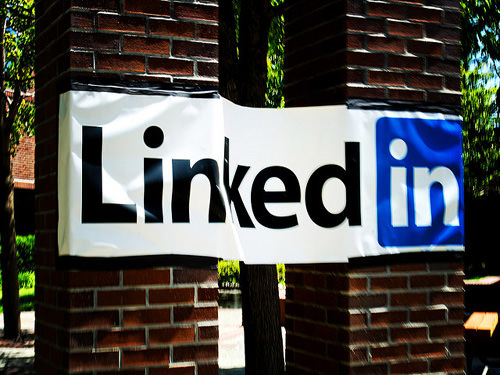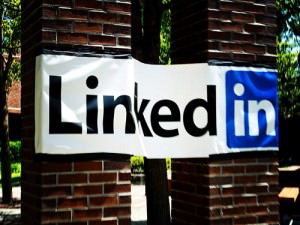How to Write a Great Follow up Message on LinkedIn
We all know that LinkedIn can be a great way of connecting with other professionals and advancing in your career or business.
The problem is 90% of active LinkedIn users use the following strategy: “send a connection request” -> “send a follow up message” -> “continue messaging until the prospect responds”
This strategy can definitely bring you results (even without using a linkedin tool for automation), however it might also harm your LinkedIn account in case your prospects consider your messages being too pushy or spammy.
But how can you make sure your messages are crafted in the most effective way?
Let’s take a look at how to write a great follow up message on Linkedin.

Tips for connection requests
One of the biggest mistakes individuals make when they’re sending connection requests on LinkedIn is that they add people, then don’t make any effort to interact with them or to build rapport.
Remember, strong, long-term relationships are mutually beneficial.
By following up and focusing on building these relationships, it can massively increase the chances of that contact doing business with you in the future.
It also makes it much easier to ask for referrals and introductions.
So, how do you build strong relationships on LinkedIn?
One of the first steps you need to take is to ensure you do your research first. Look through the person’s profile. Read any articles they’ve posted. Do a Google search, and check out their other websites, blogs, podcasts, social media profiles, or YouTube channels.
This can also be a great way of finding out if you have any shared interests or mutual contacts.
In addition to this, you need to try and move towards long-term prospecting, rather than near-term, which can come across too pushy and sales driven – no one likes feeling like they’re being sold to.
Future term prospecting using a longer sales cycle. The messages are pull orientated, which makes you appear much less desperate and can result in more long-term conversions.
The long-term approach also focuses on slightly different goals.
For example, rather than aiming to make as many sales as possible, try setting goals for the number of meetings you want, the number of responses, or the number of real relationships you are able to build.
Cold connections don’t know you. That means that they’re unlikely to trust you early on in the process. That’s why it’s so important to focus on playing the long game.
Steps to Craft a Powerful Follow up Message
One of the reasons so many users fail to get a response from potential clients is that their messages are crafted in the right way.
So, the question is, how do you create a powerful message that will increase your chances of the recipient responding?
First, let’s look at some common mistakes that people make:
- Their messages are just a sales pitch. When this happens, a lot of time, the recipient will assume it’s spam and ignore the message altogether.
- The user uses a set template that isn’t personalised and has no meaning to the other person. This is a common tactic among low-skilled sales people, and again, the message will probably be ignored.
- The message is too long and contains too much information, so the user won’t read all of it – especially if they’re a high-quality contact and have a busy schedule.
- The user hasn’t taken time to build a genuine connection with the prospect and hasn’t taken the time to research their interests and values. This can make the message boring to the reader and it probably won’t get a good response.
Luckily, there’s a way of connection with people on LinkedIn that’s much more effective and can help you to build a meaningful contacts list.
LinkedIn has lots of high-quality prospects. And many of them actually do need or want the products or services that you’re offering.
See it as an opportunity to build your network and meet amazing new people.
Before you craft your message, here are some tips to make it more effective:
- Never use LinkedIn’s standard message and always make sure your messages are personalised to each prospect.
- Include your reason for wanting to connect.
- Be clear and concise – if the message is confusing or too long, it probably won’t be read.
- Focus on building your communication skills and starting conversations.
- Pay attention to the other person’s needs and make sure it’s about them: what are their needs and interests? This will make your message less generic and more personal.
- Focus on resolving their pain points. Outline any problems they might be facing, and provide details on how you are able to solve them. You need to offer them something of value.
Example Follow up Messages
Before you write your follow up message, first, you need to decide what your goal is. What do you want the person to do? What result are you hoping for?
You need this to be able to write your call to action. This could be a question that you want them to respond to, or an offer to talk on the phone or meet for lunch or coffee.
This should be something that’s appropriate for the situation, how much trust you’ve built with the contact, and what your end goal is.
Then you can write your message by following these steps:
- Thank them for accepting your request
- Give a reason for wanting to connect. This should seem natural – you need to be interested in the other person.
- Your call to action. Give the connection a reason to respond.
Here are some examples:
Example 1
Hi (prospect’s name)
Thanks for accepting my connection request
I recently came across your profile and really enjoyed reading your article about XXX. I have experienced similar situations myself, so have a keen interest in how the situation you described plays out.
Are you thinking of writing a follow up article? If so, I’d be very interested in reading it.
Kind regards
(name)
Example 2
Hi (prospects name)
Thank you for accepting my request to connect on LinkedIn.
I noticed on your profile that you recently started working for XXX. It must be so exciting to work for such a vibrant, fast-growing company.
Have you always wanted to work in the XXX industry? Would you recommend it as a career path?
Best wishes
(name)
Conclusion
Being able to write good follow up messages on LinkedIn can make a huge difference to how well you’re able to connect with others and the response you will get.
As you can see, crafting a good message doesn’t have to be difficult.
And by following these simple steps, you can start to get more high-quality responses from your LinkedIn prospecting efforts.



